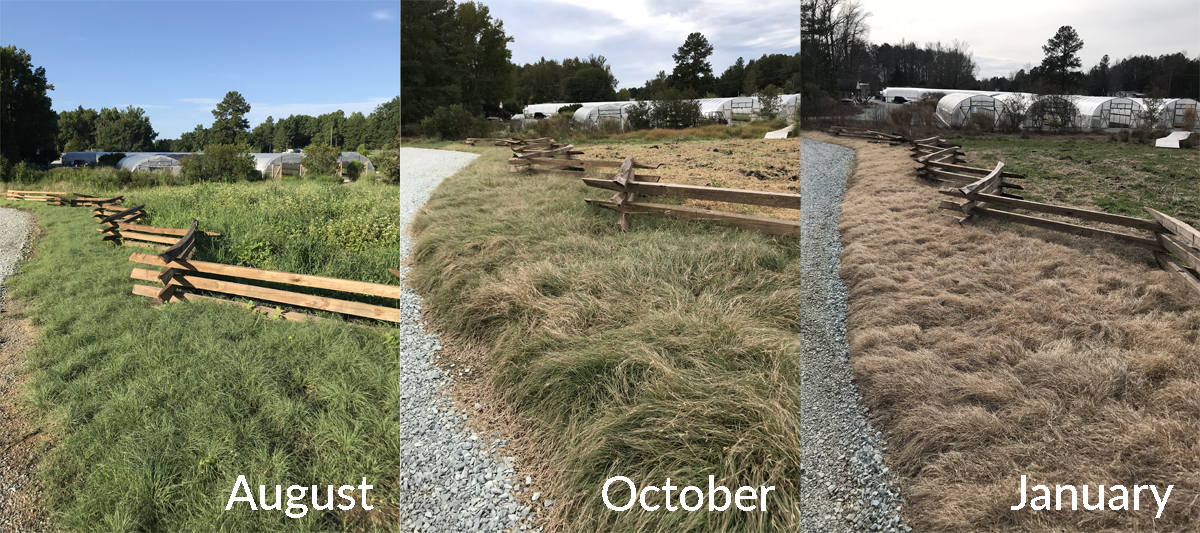
 11
11




Native lawns in Texas often display the fine, curly, blue-green leaves of buffalograss, curly mesquite, grama and needlegrasses. Of these, buffalograss produces the most uniform and attractive turf.
Buffalograss, Buchloe dactyloides, is a perennial grass native to the Great Plains from Montana to Mexico. In Texas, it is commonly found from South Texas to the Texas Panhandle; but is rarely found on the sandy soils in the eastern part of the state or in the high rainfall areas of southeast Texas. It is one of the grasses that supported the great herds of buffalo that roamed the Great Plains. Buffalograss also provided the sod from which early settlers built their houses.
Buffalograss is, perhaps, our only truly native turfgrass. Its tolerance to prolonged droughts and to extreme temperatures together with its seed producing characteristics enables buffalograss to survive extreme environmental conditions. Overgrazing and, in the case of turf, over use or excessive traffic are the pressures that lead to the deterioration of a stand of buffalograss.
Buffalograss spreads by surface runners, or stolons, and seed. It forms a fine textured, relatively thin turf with a soft blue-green color. It does not possess underground stems, or rhizomes. Buffalograss is also destroyed quite readily by cultivation. For these reasons, it can be readily removed from flower beds and gardens.



Invasive plants are Earth's way of insisting we notice her medicines. Stephen Herrod Buhner
Everyone learns what works by learning what doesn't work. Stephen Herrod Buhner
 7
7





Buffalograss is a warm-season perennial shortgrass. It is drought-, heat-, and cold-resistant. Foliage is usually 5–13 cm (2.0–5.1 in) high, though in the southern Great Plains, foliage may reach 30 cm (12 in). Buffalograss is usually dioecious, but sometimes monoecious or with perfect flowers. Flower stalks are 10–20 cm (3.9–7.9 in) tall. The male inflorescence is a panicle; the female inflorescence consists of short spikelets borne in burlike clusters, usually with two to four spikelets per bur.
Buffalograss sends out numerous, branching stolons; occasionally, it also produces rhizomes. Roots are also numerous and thoroughly occupy the soil. The numerous stolons and roots form a dense sod.



Invasive plants are Earth's way of insisting we notice her medicines. Stephen Herrod Buhner
Everyone learns what works by learning what doesn't work. Stephen Herrod Buhner

 2
2




Some places need to be wild
 2
2




Invasive plants are Earth's way of insisting we notice her medicines. Stephen Herrod Buhner
Everyone learns what works by learning what doesn't work. Stephen Herrod Buhner




“We can complain because rose bushes have thorns, or rejoice because thorn bushes have roses.” — Abraham Lincoln





Invasive plants are Earth's way of insisting we notice her medicines. Stephen Herrod Buhner
Everyone learns what works by learning what doesn't work. Stephen Herrod Buhner




“We can complain because rose bushes have thorns, or rejoice because thorn bushes have roses.” — Abraham Lincoln




“We can complain because rose bushes have thorns, or rejoice because thorn bushes have roses.” — Abraham Lincoln




When in doubt, doubt the doubt.
 2
2




Invasive plants are Earth's way of insisting we notice her medicines. Stephen Herrod Buhner
Everyone learns what works by learning what doesn't work. Stephen Herrod Buhner




“We can complain because rose bushes have thorns, or rejoice because thorn bushes have roses.” — Abraham Lincoln
 3
3




Invasive plants are Earth's way of insisting we notice her medicines. Stephen Herrod Buhner
Everyone learns what works by learning what doesn't work. Stephen Herrod Buhner
 1
1




“We can complain because rose bushes have thorns, or rejoice because thorn bushes have roses.” — Abraham Lincoln




“We can complain because rose bushes have thorns, or rejoice because thorn bushes have roses.” — Abraham Lincoln

|
Watchya got in that poodle gun? Anything for me? Or this tiny ad?
The new gardening playing cards kickstarter is now live!
https://www.kickstarter.com/projects/paulwheaton/garden-cards
|




